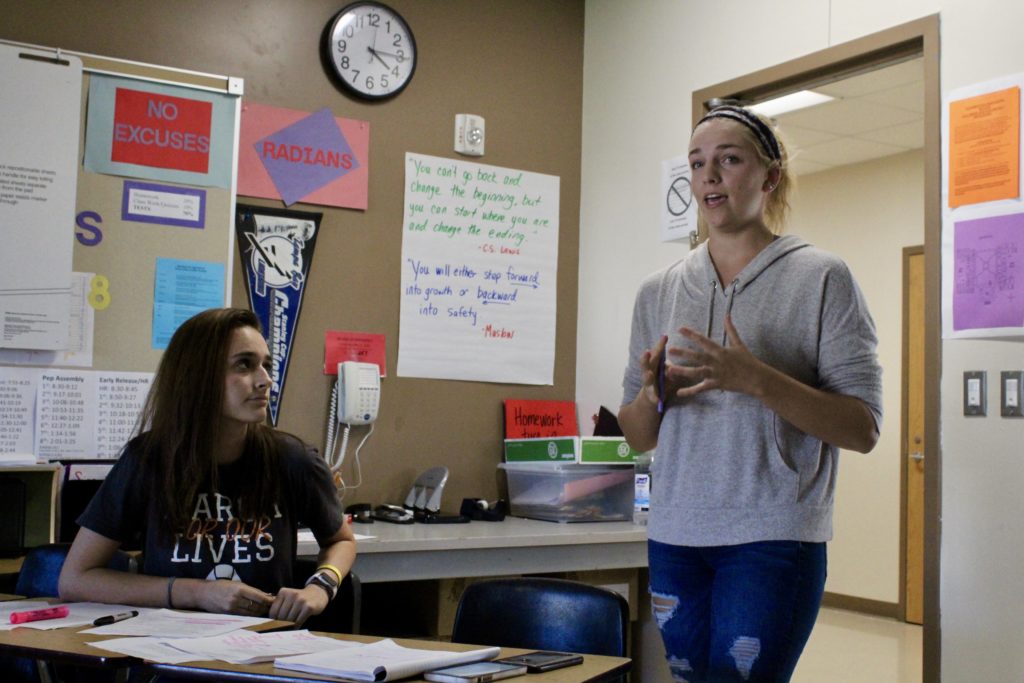
Politics, at its core, is polarizing. People associate it with conflict, argument, and frustration. It is a direct clash of opinions, while also trying to turn those opinions into compromise and policy. For many Americans, it seems the country has lost that spirit of understanding.
To most teenagers, it probably seems that this strong division between political affiliation became prominent in the 2016 election; likely because that was the first election they were paying attention to. However, arguing that the country is “more divided than ever” is a bit of an oversimplification. The Civil War was certainly a time of extreme political party disagreement. The 1960s, too, brought civil and political unrest to the United States. Still, the nation at present isn’t exactly warm and fuzzy in when it comes to discussing Capitol Hill.
It certainly doesn’t help that human beings usually aren’t automatically wired to seek out new perspectives. The relatively well-known psychological theory of confirmation bias explains that people have a tendency to look for information that suits their argument, even interpreting evidence and statistics, which may at first appear as straight facts, in a way that benefits their point of view.
Another issue that has made polarization more pronounced in recent years is ideological consistency. A 2014 Pew Research study on American political polarization found that Democratic and Republican politicians have become more consistently liberal and consistently conservative in recent years – meaning that ideological commitments are beginning to come in groupings. Today, a Democratic politician who is pro-choice likely agrees that police use excessive force on Black Americans and that school vouchers should be expanded. Yet, these policies and topics are totally separate. According to the study, politicians in the 90’s took more median stances, rather than being entirely liberal or entirely conservative down the ticket.
Polarization does more than make politics a sticky subject at Thanksgiving. It makes politics feel like a waste of time, a time for officials to argue rather than come to an agreement. Losing faith in politics leads to losing faith in the ballot box, which is bad for democracy and bad for representation.
The tense nature of politics, however, did not stop Steinbrenner’s Young Democrats and Young Republicans Club from hosting their own show-down. The two clubs came together in math teacher Christopher Collins’ room for a debate on each party’s respective environmental policies.

“I think a lot of people perceive the Republican party to be a bunch of corrupt pushovers when it comes to the environment,” said senior Eric Simon, “but I think they’ll be surprised when they hear some of our proposals.”
Three students from each club sat at the front of the room, trading rebuttals and counterclaims as the afternoon progressed. Each group’s speaking times were limited to just a few minutes; discussion topics ranged from Trump’s withdrawal from The Paris Agreement to the Clean Water Act of 1972, to the more recent Green New Deal. The end of the event featured audience questions and closing statements.
“There’s not going to be a later if we don’t deal with our climate right now,” said senior Logan Hasselbach.
Though the debate got heated at some points, and both sides seemed more preoccupied with presenting their own information rather than finding solutions between the two, events such as these are examples of different political parties wanting reach out to each other – which is a lot better than shutting the door on each other’s proposals.
Compromise in the United States is becoming tricky, but polarization is far from irreversible. Whether left-leaning or right, many Americans are willing to hover in the middle if it means effective action; or at the very least, as Steinbrenner’s two political organizations have done, coming to the table to talk about it. The best piece of action that students can take is educating themselves beyond their confirmation bias. Not just to find new ways to think independently, but also to gather around and do it together.
Jordyn Dees // Editor-In-Chief
